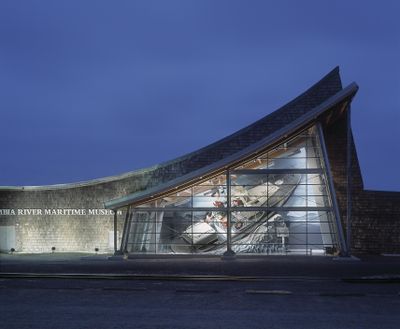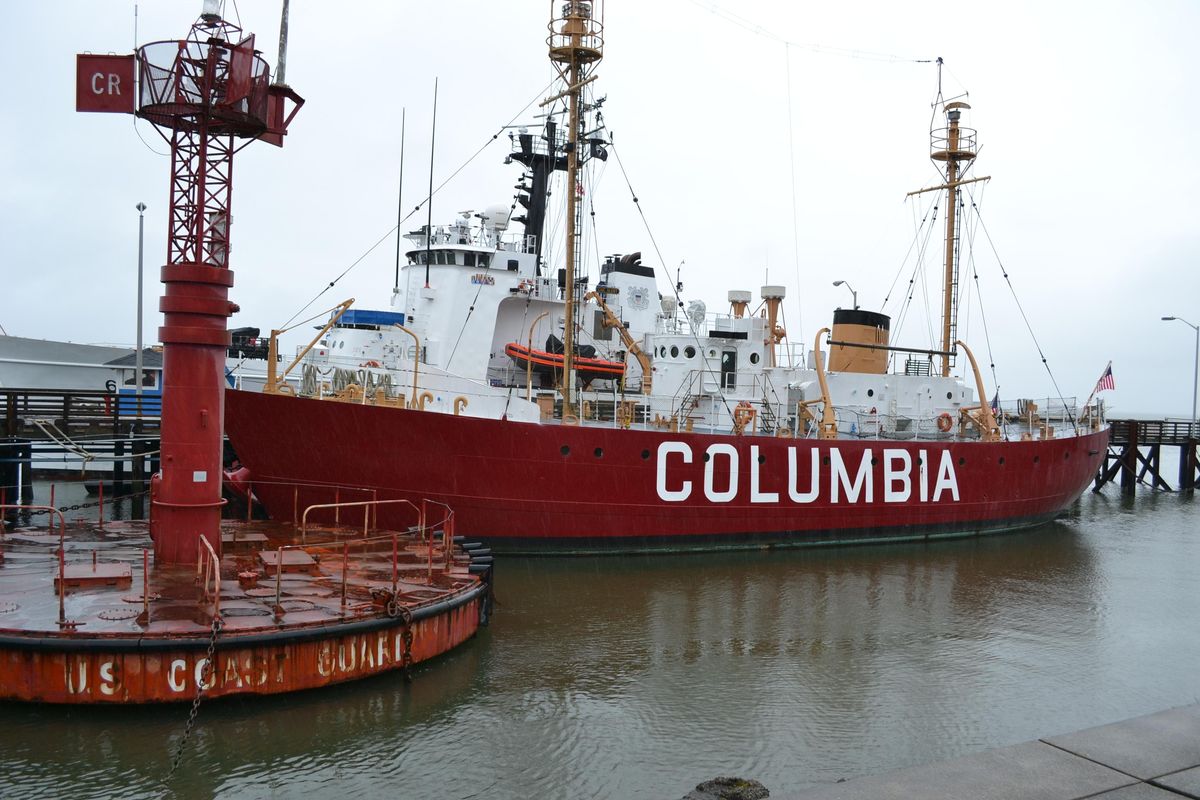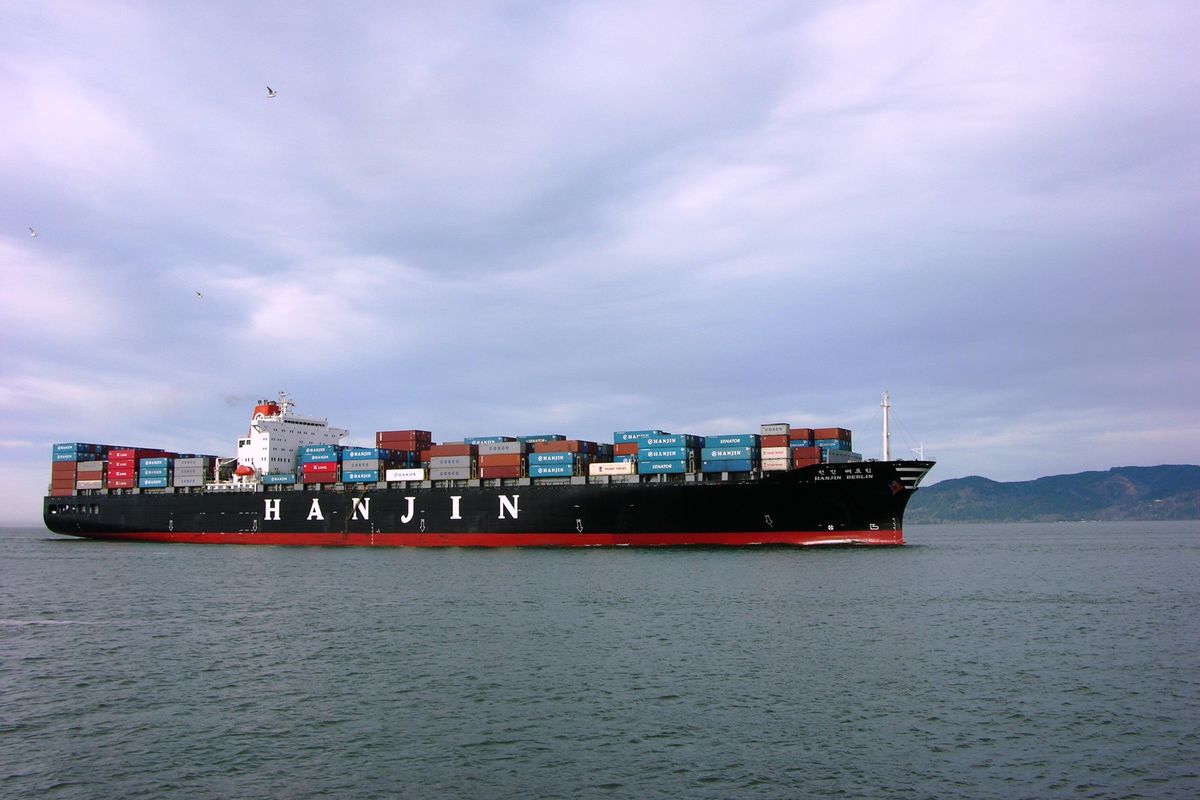River encounter: Challenge of getting over ‘the bar’ is explained at museum

The three-letter word “bar” doesn’t seem to be a threatening or terrifying term – until a visit to the Columbia River Maritime Museum in Astoria, Oregon, gives the word a new meaning you won’t forget.
The mighty Columbia has been mostly tamed. A series of dams producing hydroelectricity have controlled the river and eliminated dangerous rapids and seasonal flooding while providing water for irrigation. Still, originating from a huge watershed in the Canadian Rockies, Idaho and Oregon, it’s a massive volume of water flowing to the ocean.
That current of water colliding with the pressure of the ocean trying to come up stream creates a chaotic and uncontrolled environment at the mouth of the Columbia. The fresh water slows and sediment is dumped, creating shifting sand bars. On the surface, waves from the ocean as well as from the turbulent collision combined with sometimes high winds create one of the most dangerous entrances to any river in the world. That area of the river is called the bar.
At the Columbia River Maritime Museum, dramatic displays and videos explain the consequences of historic and present-day encounters with the bar. A map on the wall is marked with shipwrecks in the mouth of the Columbia River – since 1792, more than 200 ships and countless lives have been lost in and around the bar. Most of the ships were caught on submerged sand bars. Violent ocean waves and gale-force winds destroyed them before they could be salvaged.
The number of wrecks has been reduced, but the risk is still very real today, and the U.S. Coast Guard has a station nearby. Inside the museum, the prominent display is a full-size Coast Guard boat powering through dramatic high waves rescuing someone in the dangerous water. The Coast Guard does its rescue training in the bar during storms. A video demonstrates several times a ship breaking through waves and being lifted nearly vertical.
A cargo ship has passed the bar and is sailing up the Columbia River. (Mike Brodwater/For The Spokesman-Review)
With all the shipwrecks, it became obvious early on that captains needed help staying in the channel and off sand bars as they approached the river. They needed someone who knew the bar like the back of their hand. At first, local fishermen were used. Later, a professional bar pilot position evolved.
Before power-driven boats, a small rowboat was used. An original one is displayed – it’s small, and after seeing the dramatic Coast Guard video, it’s unbelievable that pilots were rowing on the bar in such small boats. Now powerful motorboats are used – or even helicopters – to deliver the pilot to the ship. But boarding a huge container ship by boat requires sometimes climbing a 40-foot ladder. With high seas, wind and two moving ships, there are still serious risks.
A licensed maritime pilot has to have at least two years as a journeyman on several ships. Their requirements also include, “Pilots use pilotage techniques relying on nearby visual reference points and local knowledge of tides, swells, currents, depths and shoals that might not be readily identifiable on nautical charts.” The pilots’ experience, training and responsibly for guiding large, expensive vessels across the bar with costly goods like new cars, oil and container trailers is reflected in an annual salary range of $180,000.
In this museum are the stories of shipwrecks and historic remains, including two cannons from the USS Shark, a U.S. Navy ship that ran aground on the bar in 1846. The cannons were discovered on a beach by a teenager in 2008. The best locally known shipwreck and most photographed is the Peter Iredale that was grounded in 1906. The ship’s rudder is in front of the museum. The wreckage of the ship still is on a nearby beach in Fort Stevens State Park.
There is more to see inside the museum. This area is very dependent on timely, accurate weather forecasting. An exhibit shows how science and technology is used. There is a new exhibit offering very old maps used by the original voyagers that sailed along the coast. There also are several marine movies to watch.
Just outside the museum, included in the admission price, moored and floating on the river is “Flagship Columbia,” a National Historic Landmark. Visitors are encouraged to board the ship that is in the original condition and used as a floating lighthouse guiding ships into the Columbia River bar. It was used from 1951-1979. It is fun to walk the deck and imagine what it was like to be on board in the ocean during a winter storm with 20 feet high or higher swells and 60 mph winds. It must have been terrifying.









